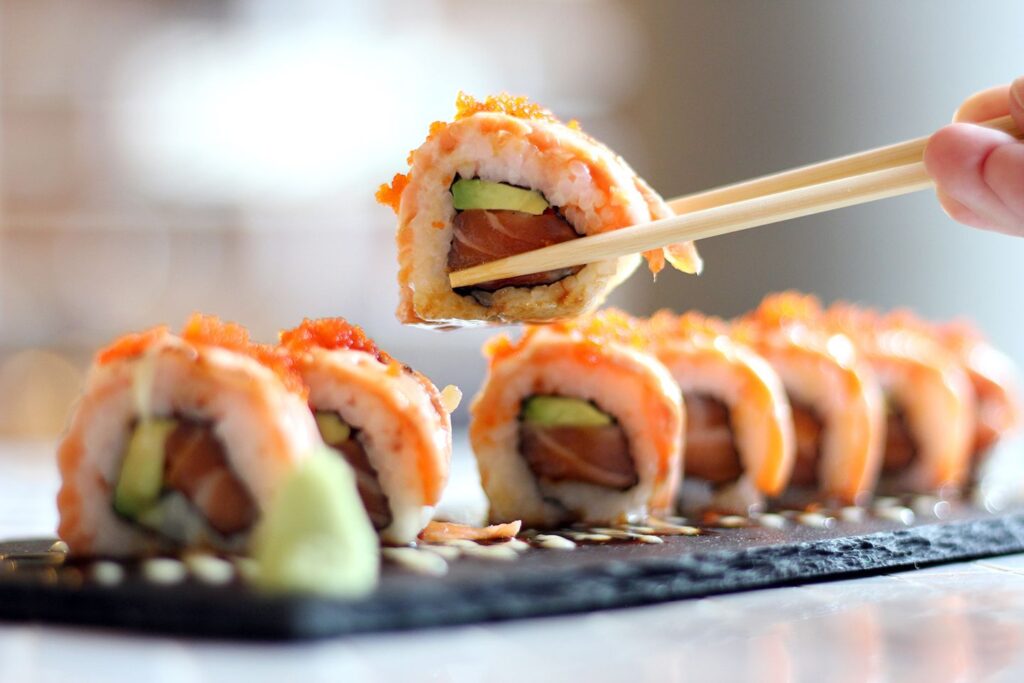
I was having my house treated by Orlando termite control and my termite technician said he was going to have Sushi for lunch. Give them a call for the bets Orlando termite control around. Anyway, we started talking about Sushi.
We were talking about how sushi restaurants generally have a lot of healthy food choices on the menu, but it can be difficult to separate the nutritious from the occasional-treat-only choices, especially if you’re not that familiar with Japanese cuisine.
The Benefits of Sushi: The Central Ingredient
The main selection at any sushi restaurant is sushi itself. As a low-calorie, minimal-additive food, sushi is usually among the best healthy food choices at a sushi restaurant. Most sushi use fresh, uncooked vegetables and seafood as the main ingredient, so you won’t usually have to worry about deep frying (however, see the “what to avoid” below).
Many fish are high in omega-3s, which can help boost your nervous system functions and help regulate blood pressure and lower cholesterol. If you’re concerned about calories, pick healthy sushi choices like salmon, tuna, avocado, vegetable and the California roll. All of these choices are low in calories (40 to 80 calories per serving).
The Benefits of Sushi: The Rice
Besides the central ingredient, sushi consists of white rice cooked with vinegar. (Vinegar itself aids in digestion and is minimal in calories.) Although few sushi are extremely high in calories, rice is higher in carbohydrates than most other sushi ingredients and it can add unnecessary calories. If you want an easy way to cut back on calories, ask for less rice in your sushi roll and more vegetables or lean fish. You may also ask if the restaurant can make your sushi with brown rice instead.
The Benefits of Sushi: The Seaweed
The other primary ingredient that makes sushi among the best healthy food choices at a sushi restaurant is the seaweed, which is used to wrap the rice and the central ingredient together. Seaweed helps detox the body, strengthens the immune system, gives you energy, improves brain health and keeps skin clear.
Other Healthy Choices
If you’re looking for other healthy food choices at a sushi restaurant, look no further than miso soup, which is low-fat and high in protein because of its soybean base. A Japanese-style salad with miso dressing is another healthy choice.
What to Avoid
Tempura may be tasty, but it refers to a highly unhealthy way of battering and then deep frying seafood, meat and vegetables. A number of sushi dishes have tempura ingredients as their key ingredients. Make sure not to order any kind of sushi with “tempura” in the name. However, you may still find tempura in a sushi dish even without the main ingredient being battered. Tempura flakes, which appear as crunchy, thin brownish pieces, are a common addition to other sushi, so make sure you ask if there’s any tempura in your sushi.
A common condiment with sushi is soy sauce, which is often extremely high in sodium. Pass up the soy sauce as a dipping sauce and make sure that the sushi you select doesn’t have soy sauce used in the preparation. Instead, eat sushi plain or use a healthier sauce, such as rice wine vinegar.
Because sushi restaurants offer dishes that are prepared with fresh vegetables, seafood and meat, there are plenty of healthy food choices for food that isn’t fried, battered or covered with unhealthy additives. If you’re ever in doubt, ask your server if the ingredients in a certain dish have unhealthy additives.
